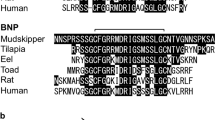Abstract
DURING experiments on the water balance of pupal and mature Hyalophora cecropia (Schneider), it was observed that the facial area of the adult may become moist when the hæmolymph is diluted. A similar, but spontaneous, discharge occurs when the adult is emerging, the watery exudate serving to soften the stiff matted silk of the emergence tunnel by which they escape from the cocoon. The fluid is released from labial glands which open through a medial pore situated on the labium between the rudimentary galeæ. These glands, which secrete silk in the larva, survive metamorphosis to the non-feeding adult as a pair of tubes composed of a thick-walled posterior part lying ventrally in the prothorax and a thin-walled, much folded anterior part which unites with its counterpart and opens at the labial pore. The present experiments show that these glands not only persist, but also continue to secrete in the adult, where they become organs of diuresis. This work records the relationship of secretion to physical restraint, and the high rates of secretion caused by dilution of the hæmolymph.
This is a preview of subscription content, access via your institution
Access options
Subscribe to this journal
Receive 51 print issues and online access
$199.00 per year
only $3.90 per issue
Buy this article
- Purchase on Springer Link
- Instant access to full article PDF
Prices may be subject to local taxes which are calculated during checkout
Similar content being viewed by others
Author information
Authors and Affiliations
Rights and permissions
About this article
Cite this article
EDWARDS, J. Diuretic Function of the Labial Glands in Adult Giant Silk Moths, Hyalophora cecropia. Nature 203, 668–669 (1964). https://doi.org/10.1038/203668a0
Issue Date:
DOI: https://doi.org/10.1038/203668a0
Comments
By submitting a comment you agree to abide by our Terms and Community Guidelines. If you find something abusive or that does not comply with our terms or guidelines please flag it as inappropriate.



